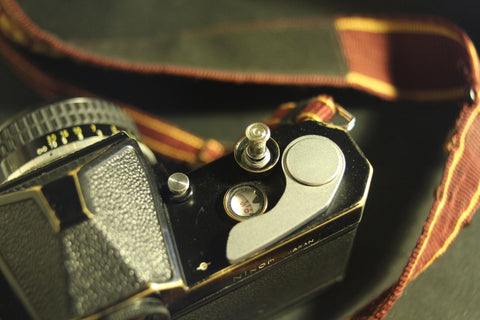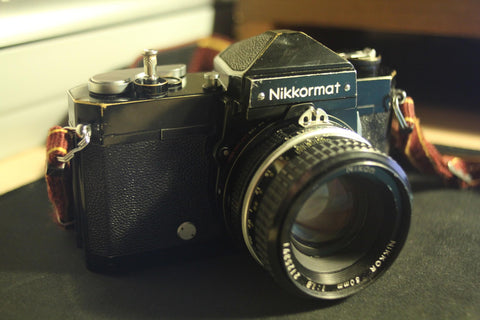If you enjoyed our first guest blog post, here's another!
If any of you are thinking of acquiring a new camera for your collection, or are thinking of making the leap into analogue photography, read on to see what Ray Goodwin (@ray__goodwin) thinks of the Nikkormat FTn!
For as long as I can remember, analogue photography has been something I have loved. When I started to take photography ‘seriously’, I became infatuated with the idea of shooting with a film camera. In my opinion, they are beautifully designed and considered, meant to be reliable tools, and are ultimately built to last. The manual camera is the ultimate nod to this - a no-frills camera with no complications or useless features.
I have always been a Canon person. My first DSLR was a Canon, and I have always liked the lens system and the layout of their cameras. I find them intuitive and nothing seems complicated. Nikon was ‘the dark side’ to me: the exposure meter was backwards, and so was the mounting system compared to Canon! Despite this, I had always had my eye on the analogue Nikon cameras. The provenance of Nikon SLRs was hard to miss, with them being used by countless professional photographers as well as NASA. So when the time came, I was ready to get my hands on a Nikon. I then saw how much they cost, and, being a university student, I thought: “Oh well, never mind”. However... there was a light at the end of the tunnel... and it was affordable!
Welcome to the stage, the Nikkormat FTn. Nikkormat was the budget-friendly option for Nikon users back in the day, and to my understanding, they were used as backup bodies for professional photographers who were using F and F2 bodies. The FTn was an early adopter of the 60/40 exposure system found in later Nikon models, but it still retained the metering prong for the Non-Ai system of F mount lenses.

The first thing you notice about the FTn is the weight. It has a reassuring density which I enjoy and look for in a camera. Operation is also incredibly easy, once you get around the fact that the shutter speeds are located around the lens collar, in a similar fashion to an Olympus OM systems. The FTn fires, meters and rewinds like every other 35mm SLR out there; the only difference is the badge on the front, and the fantastic F mount glass out there. The FTn will allow you to use the majority of the F mount lenses - but if you want to use the inbuilt meter, look out for lenses with the ‘metering ears’ on the lens. If you use an external meter, you can use Non-Ai, Ai and AiS lenses. About metering - remember what I said about it being backwards? Well, the needle points down for overexposure, and up for underexposure. Also, the advance lever has to be at a certain position to meter the light, as when it’s pushed to its resting position the meter is off, saving your battery. There is also a depth of field (DOF) preview button, just to the left of the shutter. So if you want to preview your DOF, you can!

So: is the FTn worth your money?
The short answer is 'yes'. If you’re looking for a cheap SLR with access to Nikon’s lenses, this is it. You can pick these up for around £50 in decent condition, and often with a lens. Funnily enough, I bought this exact camera from West Yorkshire Cameras back in May and I have loved it ever since. Despite it being a few months, it has been a reliable camera for me and I have spoiled it with a nice original Nikon strap as well as the Nikkor 50mm F1.8. I plan on using the FTn more often, as it’s a joy to use - but I have a serious case of gear acquisition syndrome so for the most part I have too much to choose from. So, if you are on the lookout for a reliable 35mm SLR, you can't go wrong with a Nikon.

Words and images: Raynor Goodwin

